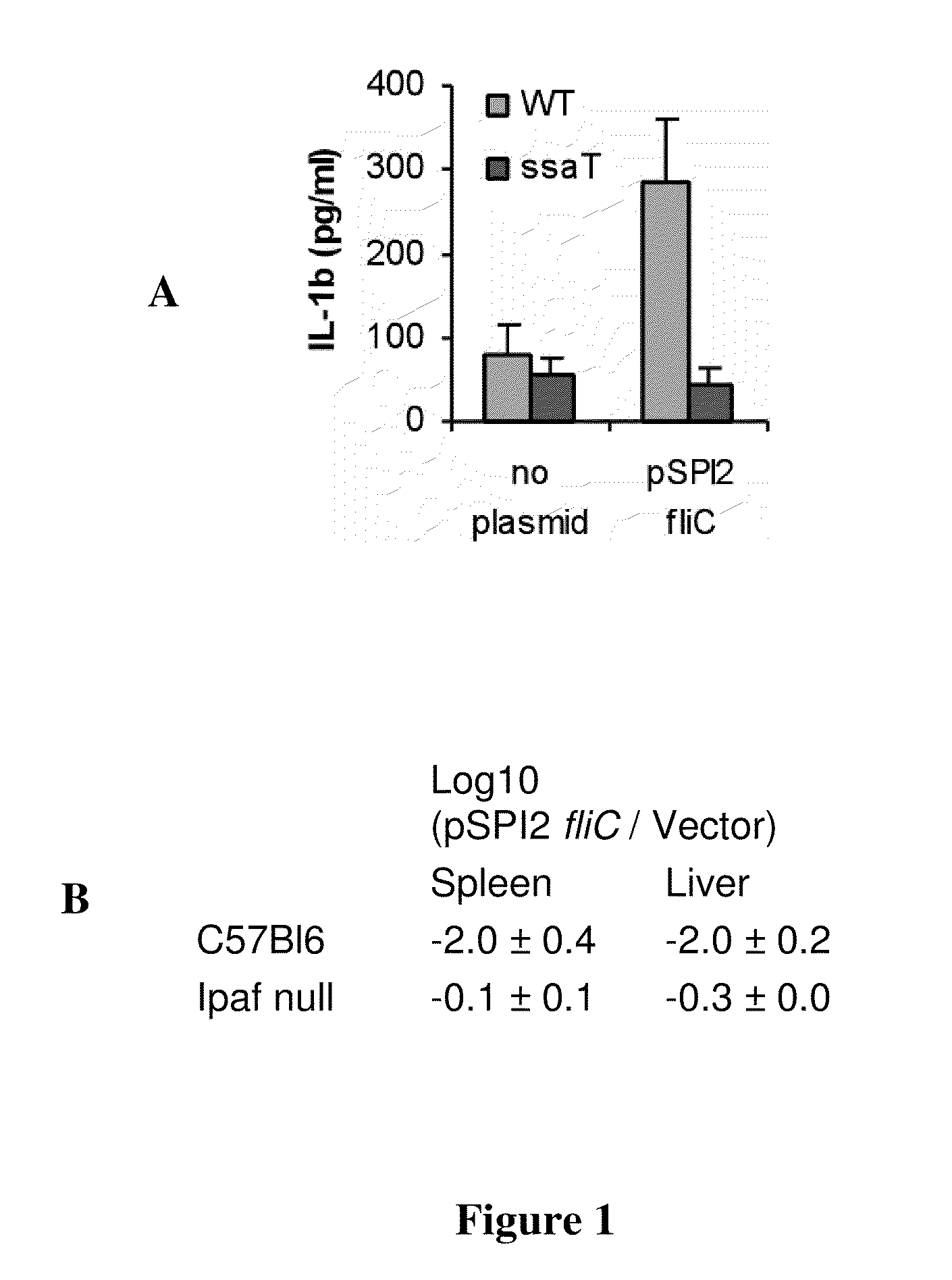Flagellin polypeptide vaccines
a polypeptide and vaccine technology, applied in the field of vaccines, can solve the problems of no suggestion of vaccines that will provide intracellular and extracellular, and achieve the effect of facilitating cellular uptak
- Summary
- Abstract
- Description
- Claims
- Application Information
AI Technical Summary
Benefits of technology
Problems solved by technology
Method used
Image
Examples
example 1
Cloning of Influenza NS with Flagellin Inserted
[0102]Flagellin was PCR amplified and inserted into the influenza NS segment by strand overlap exchange PCR. The resulting product contains the NS segment of PR8 from plasmid pHW198-NS with flagellin inserted into the NS1 gene. NS1 is truncated at amino acid 125 by a start / stop sequence (TAATG) which stops NS1 after amino acid 125 and starts the flagellin insert. We utilized the minimal flagellin sequence that would be recognized by TLR5 and Ipaf. This flagellin has the variable domain removed and contains Salmonella typhimurium flagellin fliC amino acids 1-184, an epitope tag linker (GSK-HA), followed by flagellin residues 395-494. This construct preserves the NS2 gene splice sites, which should leave NS2 uninterrupted. The PCR product was cut with ApaI and NheI and inserted in to pHW198-NS cut with the same enzymes.
example 2
In Vitro Activation of TLR5 by Recombinant Influenza Virus
[0103]In this example, recombinant influenza viruses expressing flagellin are verified to activate TLR5. Two types of recombinant influenza expressing flagellin are used: 1) immunomodulatory flagellin polypeptide fused to one of the influenza envelope proteins (HA or NA), or 2) such peptide that is expressed free within the cytosol of infected cells and that can escape to the extracellular space upon rupture of the infected cell. Supernatants from cells infected with such recombinant flagellin polypeptide-expressing influenza are incubated with Chinese hamster ovary cells (CHO) that express human TLR5 along with luciferase driven by an NF-κB responsive promoter. This cell line permits evaluation of TLR5 engagement by luciferase activity. Positive luciferase production is taken as evidence for successful flagellin polypeptide expression from the recombinant virus. The flagellin polypeptide encoded by these viruses must contain...
example 3
In Vitro Activation of Ipaf by Recombinant Influenza Virus
[0105]In this example, recombinant flagellin polypeptide-expressing influenza are analyzed for Ipaf activation. Flagellin polypeptide is expressed as a free protein in the cytosol of infected cells. To determine Ipaf activation, macrophages are infected with the recombinant viral particles and IL-1β secretion measured in comparison to wild type influenza virus. The dependence upon Ipaf signaling is determined via the use of macrophages derived from mice lacking Ipaf, or by knock-down using shRNA or siRNA in human monocytes derived macrophages. The flagellin expressed in these viruses must contain the D0 domain, but could contain more of the protein.
PUM
| Property | Measurement | Unit |
|---|---|---|
| width | aaaaa | aaaaa |
| compositions | aaaaa | aaaaa |
| length | aaaaa | aaaaa |
Abstract
Description
Claims
Application Information
 Login to View More
Login to View More - R&D
- Intellectual Property
- Life Sciences
- Materials
- Tech Scout
- Unparalleled Data Quality
- Higher Quality Content
- 60% Fewer Hallucinations
Browse by: Latest US Patents, China's latest patents, Technical Efficacy Thesaurus, Application Domain, Technology Topic, Popular Technical Reports.
© 2025 PatSnap. All rights reserved.Legal|Privacy policy|Modern Slavery Act Transparency Statement|Sitemap|About US| Contact US: help@patsnap.com

